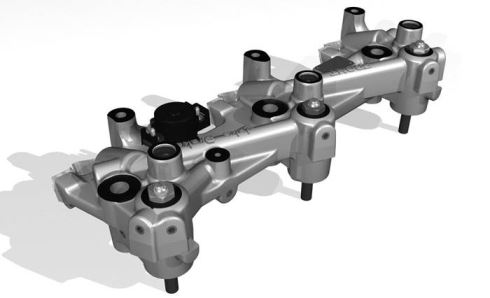By Brett Wolfe, F252125
February 2012
Three different types of brake retarder systems are used on diesel engines: exhaust brakes, engine compression brakes, and variable-geometry turbo brakes. Here’s a brief description of how each works.
An exhaust brake uses a “flap” that closes off exhaust flow just downstream of the turbocharger in the exhaust system. This causes back pressure (55 psi on my motorhome), which generates braking power. On motorhomes equipped with an Allison transmission, the exhaust brake usually is tied in with downshifting of the transmission to a preselected gear (usually second gear or fourth gear). Think of this type of system as a potato stuffed in the tailpipe.
An engine compression brake, including the popular Jacobs Engine Brake, or Jake Brake, involves manipulating the normal stroke cycle in the cylinder. The exhaust valves are opened as the pistons reach “top dead center” on the compression stroke after the engine has done the work of compressing approximately 18 volumes of intake air to 1 volume. If the exhaust were not allowed to escape when the compression brake opened the exhaust valves (such as when coasting with the compression brake off), the compressed air would force the piston back down. But with the compression brake on, the engine works to compress air in the cylinder, but then the air is let out. This generates quite a bit more braking force than an exhaust brake. The smallest engines to offer an engine compression brake are the Caterpillar C9 and Cummins ISL.
A variable-geometry turbo brake involves putting the turbocharger’s vanes in reverse or closing the aperture (depends on the engine manufacturer) to create back pressure with much the same effect as an exhaust brake.

